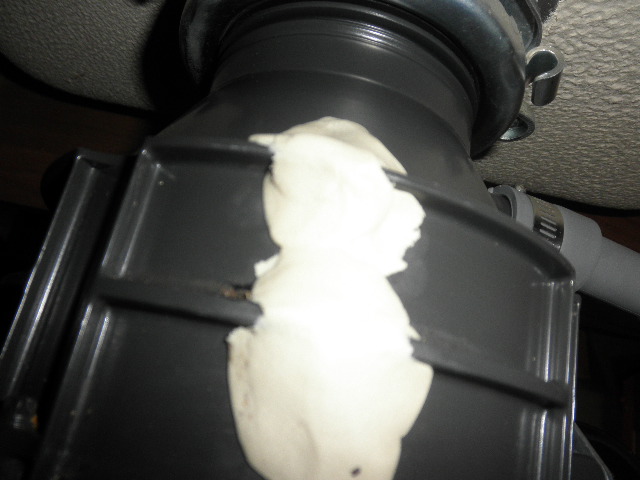Handy Techniques for Repairing a Dripping Garbage Disposal
Handy Techniques for Repairing a Dripping Garbage Disposal
Blog Article
Were you trying to locate related information Tips on Fixing a Leaking Garbage Disposal?

Waste disposal unit are crucial kitchen area devices that aid in getting rid of food waste effectively. However, a dripping garbage disposal can be an irritating and messy problem to deal with. Fortunately, lots of leakages can be taken care of easily with a couple of straightforward actions. In this write-up, we will certainly go over how to deal with a leaking garbage disposal successfully.
Intro
Garbage disposals are set up under kitchen sinks and are created to shred food waste right into smaller sized items, enabling it to travel through the plumbing system conveniently. While these gadgets are usually trustworthy, leaks can take place gradually as a result of deterioration, loosened connections, or damage to the device.
Step-by-Step Guide to Dealing With a Dripping Waste Disposal Unit
Turn Off the Power
Before trying any kind of repairs, ensure that the power to the waste disposal unit device is shut off to prevent the risk of electric shock.
Locate the Leakage
Recognize the specific area of the leakage and identify the reason
Tighten Links
Utilize a wrench to tighten up any type of loosened links in between the disposal system and the pipes system.
Replace Seals or Gaskets
If the leakage results from used seals or gaskets, eliminate the old elements and change them with brand-new ones.
Patching Cracks or Holes
For splits or holes in the disposal device, usage epoxy or a suitable patching material to seal the broken area.
Identifying the Resource of the Leakage
Before attempting to repair a leaking waste disposal unit, it is essential to recognize the resource of the leak. This can generally be done through aesthetic examination or by carrying out easy examinations.
Visual Evaluation
Inspect the waste disposal unit unit very carefully for any indications of water leakage. Pay close attention to locations around seals, gaskets, and connection points.
Evaluating for Leaks
One method to evaluate for leaks is by running water through the disposal unit and checking for any kind of noticeable indicators of leakage.
Common Sources Of Leaks in Waste Disposals
Worn Seals and Gaskets
Seals and gaskets play a critical function in preventing water from leaking out of the waste disposal unit. Over time, these elements can deteriorate, causing leakages around the disposal device.
Loose Connections
The links in between the garbage disposal and the plumbing system can become loosened with time, triggering water to leak out throughout operation.
Splits or Holes in the Disposal Unit
Physical damage to the waste disposal unit, such as cracks or openings in the housing, can additionally result in leaks.
Devices and Products Needed for Taking Care Of a Leaking Waste Disposal Unit
Before beginning the fixing process, gather the essential devices and materials, including a screwdriver, adjustable wrench, plumbing technician's putty, substitute seals or gaskets, and epoxy or patching product for fixing splits or openings.
Testing the Garbage Disposal After Repair Work
When the repair work is total, check the garbage disposal by running water through it to make certain that the leakage has actually been settled.
Preventive Upkeep Tips to Prevent Future Leaks
To prevent future leakages, it is essential to execute regular upkeep on your garbage disposal. This includes keeping it tidy, preventing putting non-food things or tough items down the disposal, and occasionally checking for leakages or other concerns.
Final thought
In conclusion, taking care of a leaking waste disposal unit is a relatively straightforward procedure that can be completed with fundamental devices and materials. By complying with the steps detailed in this post and practicing preventative upkeep, you can keep your waste disposal unit in good working condition and avoid expensive fixings in the future.
What to Do About a Leaking Garbage Disposal
A leaking garbage disposal often goes unnoticed until you confront a sopping cabinet, a foul-smelling puddle, or an audible drip-drip-drip from the unit. The fix can be frustrating, too, because the leak can stem from a number of components in the system. Fortunately, with a little sleuthing, you can zero in on the leak and—depending on the exact location—stop the icky oozing and repair the component that caused it. Worst case scenario, if it turns out that the garbage disposal must be replaced, installing a new one is a reasonable do-it-yourself task for those with basic plumbing skills. Read on to keep the cash you’d otherwise hand over to a pro.
Prepare to find the leak
Prior to testing the garbage disposal for leaks, unplug it at the wall outlet and turn off the power from the breaker box to prevent electrical shock. Then insert a watertight sink stopper into your sink drain and wipe the unit dry with a clean cloth. In any handy container, mix a few drops of food coloring into a few cups of water, and pour the dyed water onto the sink stopper to help you locate the leak.
Investigate the source
the top, where the disposal meets the sink drain the side, where the dishwasher hose or main drain pipe connects to the disposal or the bottom of the unit Inspect each of these locations while gliding a light-colored rag over the unit; the dyed water will readily show on the rag and reveal the location of the leak. If a leak isn’t immediately apparent, remove the sink stopper and pour a few more cups of dyed water down the sink drain, then check for leaks again. Leaks near the top of the unit are more likely to show themselves while the sink is plugged, while side and bottom leaks are more noticeable while the sink is unplugged.
The metal sink flange that sits directly inside the sink drain is typically sealed around the top with plumber’s putty (a clay-like sealant) and then secured from under the sink with bolts. If the plumber’s putty deteriorates, or the bolts loosen, the flange can no longer form a watertight seal between the sink drain and the disposal—which could cause a leak at the top of the unit.
To reseal the leaky flange, you must first detach the garbage disposal. Start by loosening the screws securing the main drain pipe to the disposal, then loosen the screws in the metal clamp securing the dishwasher hose to the disposal and detach the drain pipe and dishwasher hose from the disposal. Loosen the screws in the mounting ring that connects the disposal to the metal mounting assembly beneath the sink, then pull down the disposal and carefully set it on a clean, dry surface. Loosen the bolts in the mounting assembly with a wrench, then pull down the mounting assembly and set it near the disposal.

Hopefully you liked our excerpt about How to fix a pretty consistent leak from my garbage disposal. Thank you for finding the time to read our post. Please take a moment to distribute this blog entry if you appreciated it. Thank you so much for going through it.
This Site Report this page